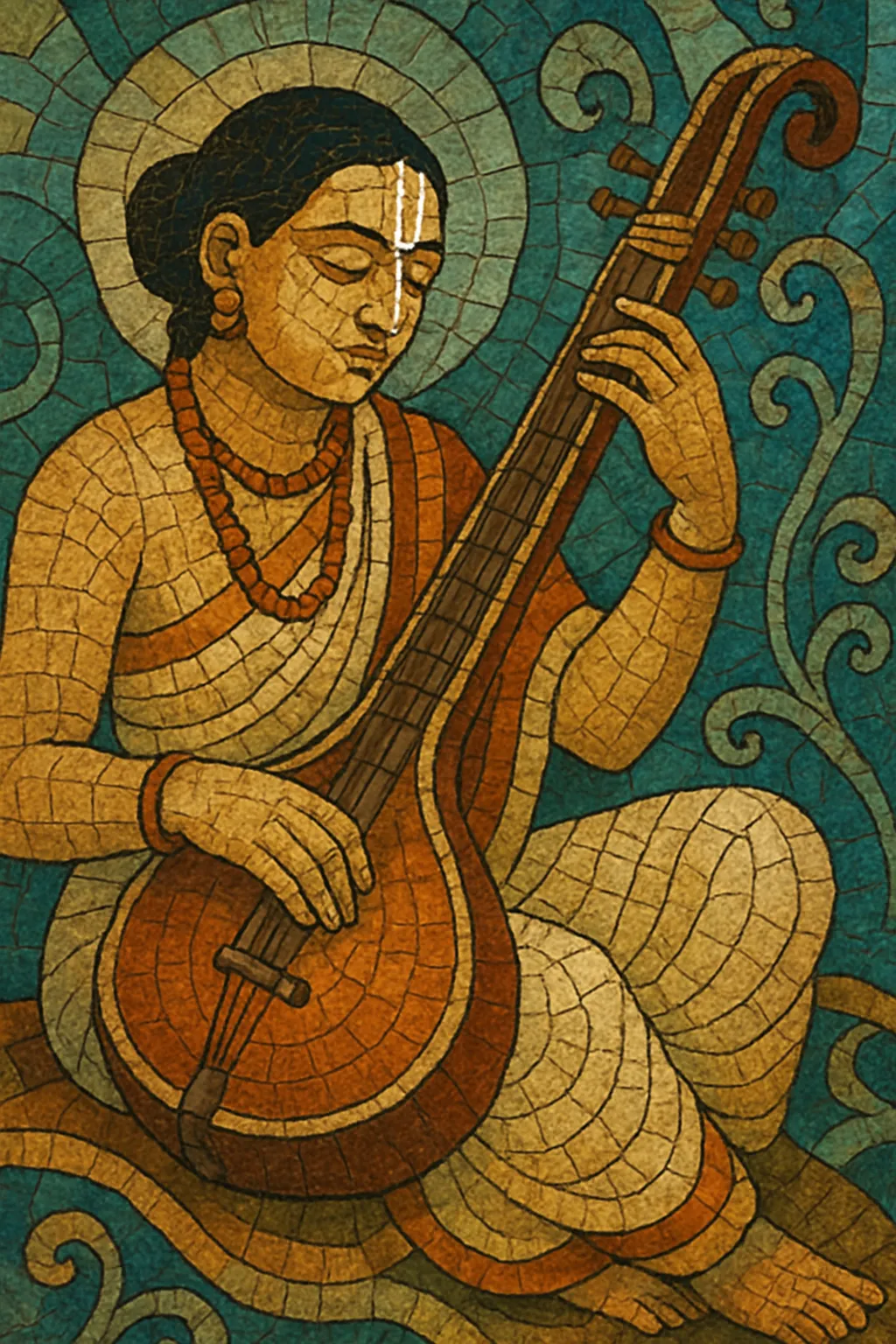Carnatic classical is the art music tradition of South India, centered on the raga–tala system and a rich body of devotional compositions. It is primarily a vocal-centric idiom, with instruments often emulating the nuances of the human voice.
Its melodic language is organized around ragas (modes) and their characteristic gamakas (ornamentations), while rhythm is governed by talas (cyclical time frameworks) with intricate, mathematically elegant patterns. The 72-melakarta parent-scale system provides a theoretical scaffold from which thousands of janya (derived) ragas are formed.
Canonical composition forms include varnam (didactic and concert-opening pieces) and kriti/kirtana (devotional songs with sections such as pallavi, anupallavi, and charanam). Improvisation is highly codified, featuring alapana (non-metric raga exploration), neraval (melodic-rhythmic expansion of a line), and kalpana swaras (solfège improvisation), culminating in the advanced suite of Ragam–Tanam–Pallavi.
Typical concert ensembles feature a lead vocalist or instrumentalist accompanied by violin, mridangam (double-headed drum), and supporting percussion such as ghatam (clay pot), kanjira (frame drum), and morsing (jaw harp), along with a sruti (drone) from tambura.
Carnatic classical traces its roots to ancient Indian musical thought and liturgical practice, with strong links to Vedic chant and South Indian temple traditions. By the 15th–16th centuries, composers of the Bhakti movement—especially Purandara Dasa (often called the "father of Carnatic music")—systematized pedagogy (sarali, janta, alankara exercises) and laid practical foundations for teaching and composition.
The musical language and concert repertoire crystallized in the late 18th and early 19th centuries with the Carnatic Trinity: Tyagaraja, Muthuswami Dikshitar, and Syama Sastri. They codified the kriti form, expanded raga vocabulary, and set high compositional standards, largely in Telugu and Sanskrit (with significant Tamil and Kannada repertoires as well). Their works remain the core of the tradition.
The 20th century saw formal institutions (e.g., the Madras Music Academy) and new concert norms, notably the Ariyakudi concert paddhati (format), which balanced composition and improvisation. Radio, recording technology, and later television broadened audiences; virtuosi such as M. S. Subbulakshmi, Semmangudi Srinivasa Iyer, and instrumental innovators like Lalgudi Jayaraman helped globalize the idiom.
Today, Carnatic music thrives in South India and across a global diaspora. Artists integrate sophisticated rhythmic devices (korvai, mora) and konnakol (vocal percussion) into pedagogy and performance. Collaboration with jazz, film, and world-music scenes has expanded its footprint, while rigorous gurukula-style training and modern conservatories sustain its classical core.


